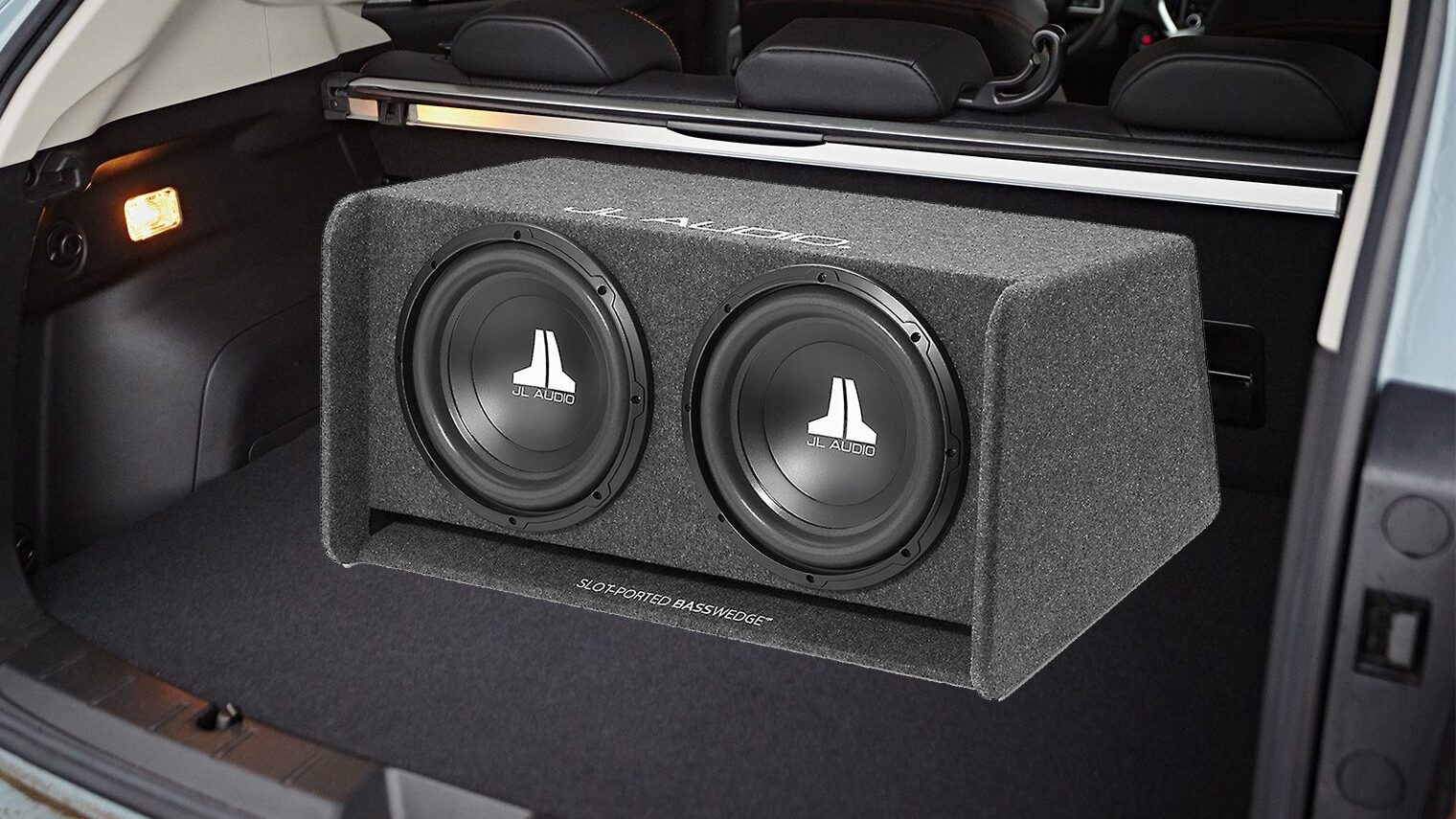Home > Learn > Choosing the Right Equipment > One Subwoofer Can Be Better Than Two!
More bass is always better, right? Well, not always! It's a common misconception that that two subwoofers will always better than one. In many cases, one subwoofer can actually be better than two. It all depends on your stereo preferences, your budget and the vehicle or location that you're installing your subwoofers. Let's break down a few areas that will help you think about whether you need one or more subwoofers.
Installation Location

One of the most important aspects of deciding whether you need one, two or more subwoofers is to first understand the limitations and the environment that your subwoofer(s) are going to be installed in. Some vehicles have more flexibility in terms of space and provide an optimal location to place one or more subwoofers. If you're willing to sacrifice some of your trunk space and want heavy bass, two subwoofers in the trunk of your sedan might be a great option.
But for others, space might be limited and position might be less than ideal. Or, you may want it to integrate well into the interior of your car instead of sitting in the trunk or on the floor. Component subwoofers might be too deep for behind a truck seat or tucked in a panel, so shallow subwoofers might be the alternative. And although 10″ shallow subwoofer might emit great bass and fit in the tight space you need it to, you might need to double up in order to get the same amount of bass as a single 12″ subwoofer.
On the flip side, some cars have both great positioning and the space required for quality sub. The overwhelming majority of consumer will be more than satisfied with a single 12″ subwoofer if it's installed in an ideal location in an enclosure that meets the specs of the sub.
Sound Preference
Your preference for bass is obviously important. If your priority is earth shaking bass over sound quality, one 12in sub might not be enough for you. What I can tell you is that in nearly all cases with a standard 4 channel speaker setup (two front speakers+tweeters and two rear speakers+tweeters), two 12in subwoofers will significantly overpower your speakers. But if that's your goal, then more is better.
On the flip side, if you're an audiophile who values a well-balanced stereo across a wide variety of music genres and prefer not to waste extra money on excessive bass, a single 10″ or 12″ subwoofer will very likely give you the rounded bass you need. Or, for tight spaces two shallow 10″ subs.
Subwoofer Specs
Not all subwoofers are created equal. A budget friendly, entry level subwoofer might be great for your wallet but the volume, quality and specs could differ drastically from a high quality SPL subwoofer.
There are a couple specs in particular that are important to note that can have a drastic impact on a subwoofer's performance. Most notably:
- Frequency Response (range) – This is the frequency range that the subwoofer will operate in. The lower the range, the lower the bass frequencies it can emit.
- Power Handling – Max RMS power handling is the continuous power handling that the subwoofer can handle. In many cases, the higher the power handling, the higher the volume the subwoofer can emit. But not always.
- Sensitivity – Sensitivity is really an efficiency rating. It tells you how much volume the subwoofer can output for a given power input. Typically it's xx dB at 1 watt. Between this sensitivity rating and the RMS power handling, you can get a sense of the subwoofer's output when comparing subs together.
- Xmax – This is another one that I look at if I want to see how well a subwoofer will perform. It tells you how far the subwoofer's cone can move back and forth. In most cases, the higher the Xmax, the more SPL.
Conclusion
The most common subwoofer in an aftermarket car stereo setup is a single 12″ subwoofer. The 12″ sub gives a great blend of deep bass and volume without overpowering the other components of your stereo. But depending on the limitations of your vehicle, wallet, and your sound preferences you might still want two or more subs for your setup.

I want to put 6.75 sub woofers in back doors of chevy silverado 2015 crew cab with rms of 200 and 8″ in front doors with rms of 225 and 4 channel amp with 350rms per channel at 2ohms